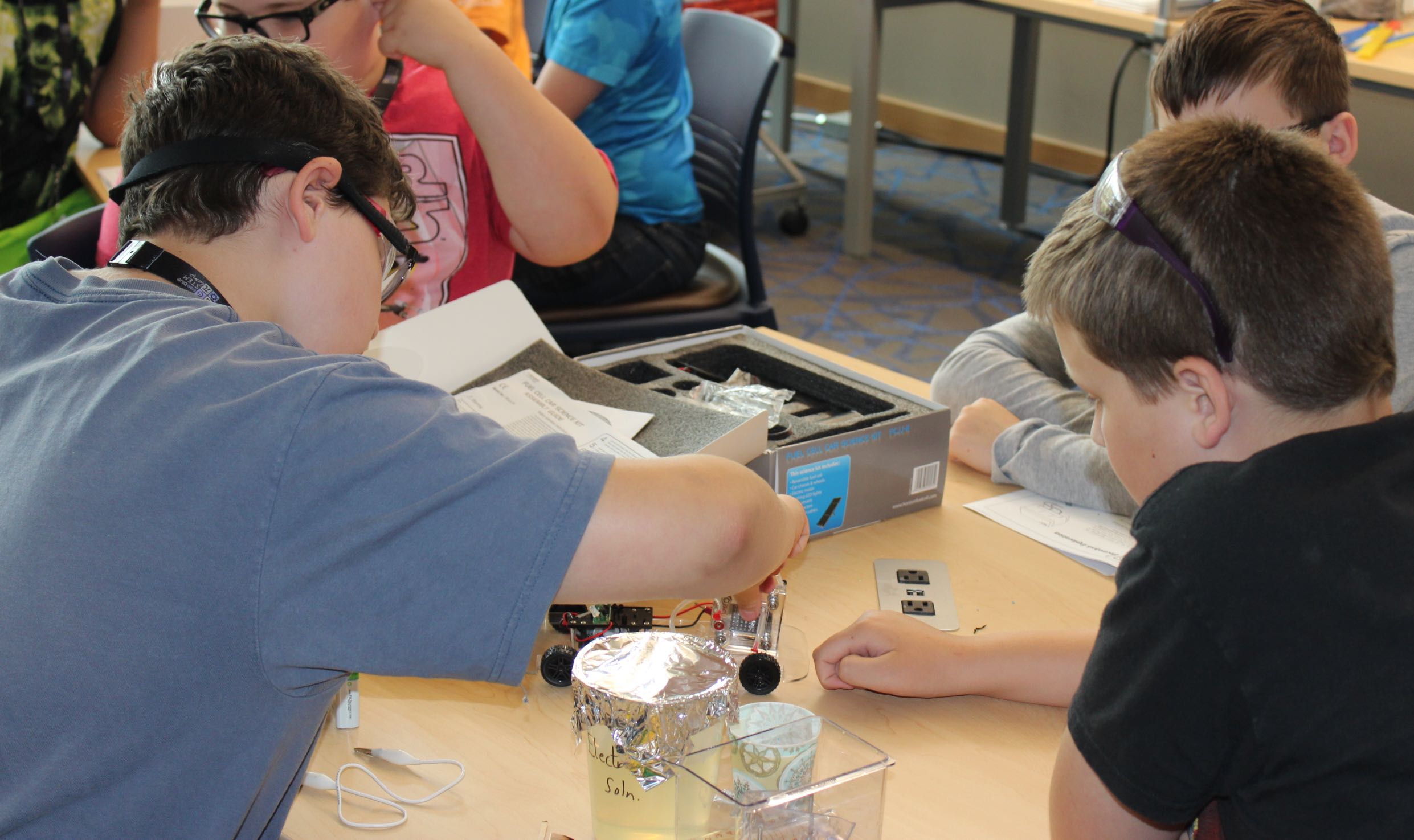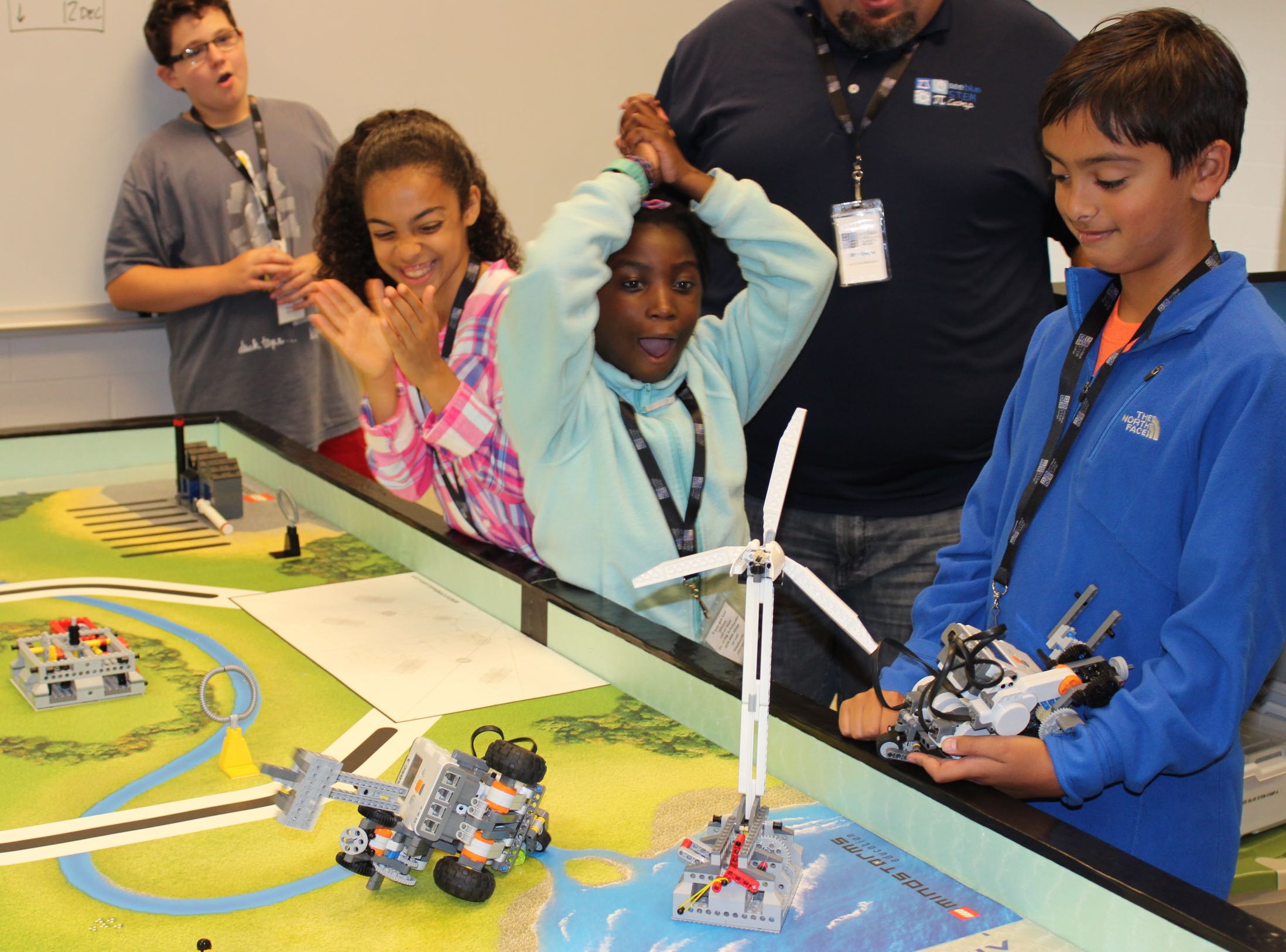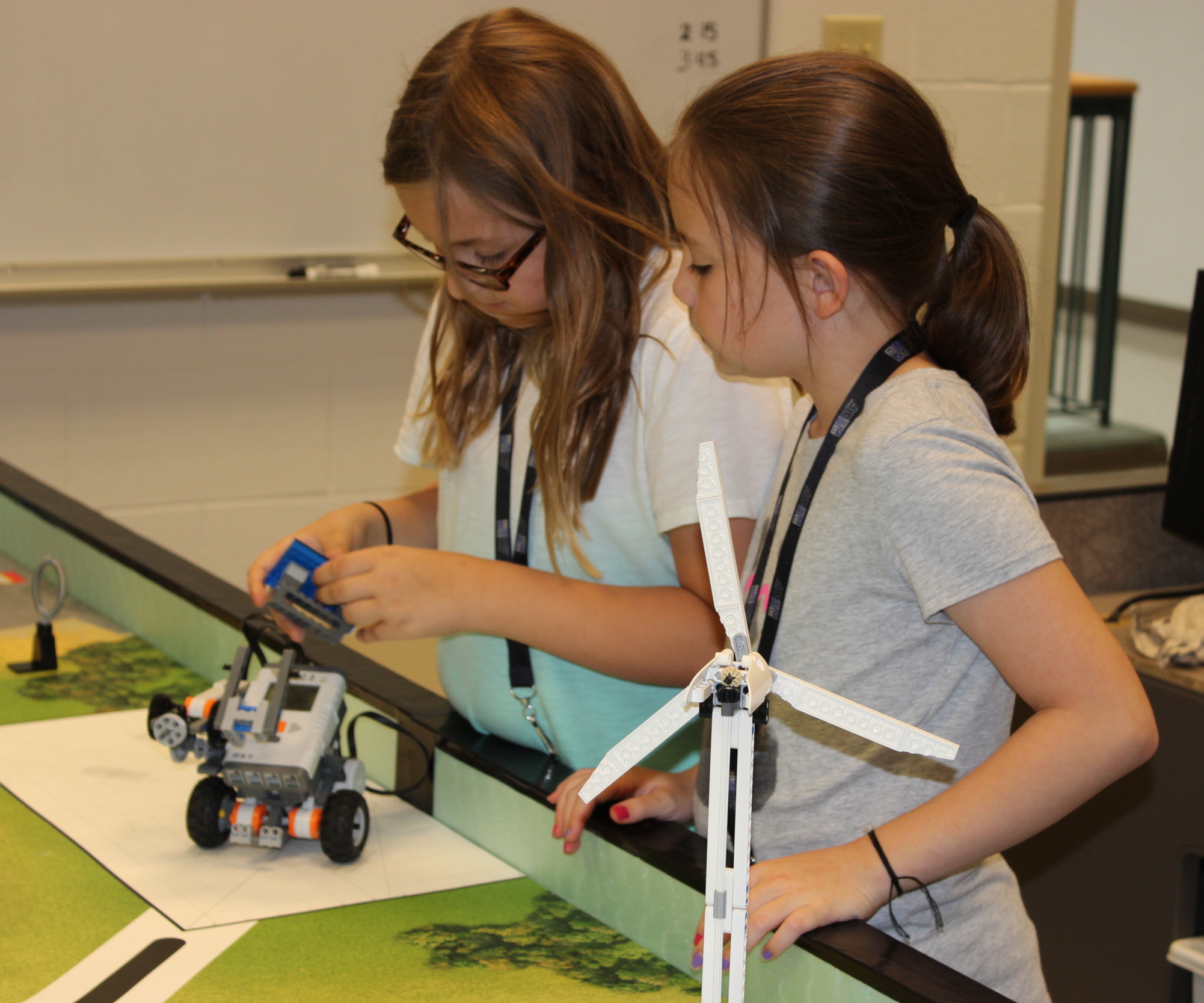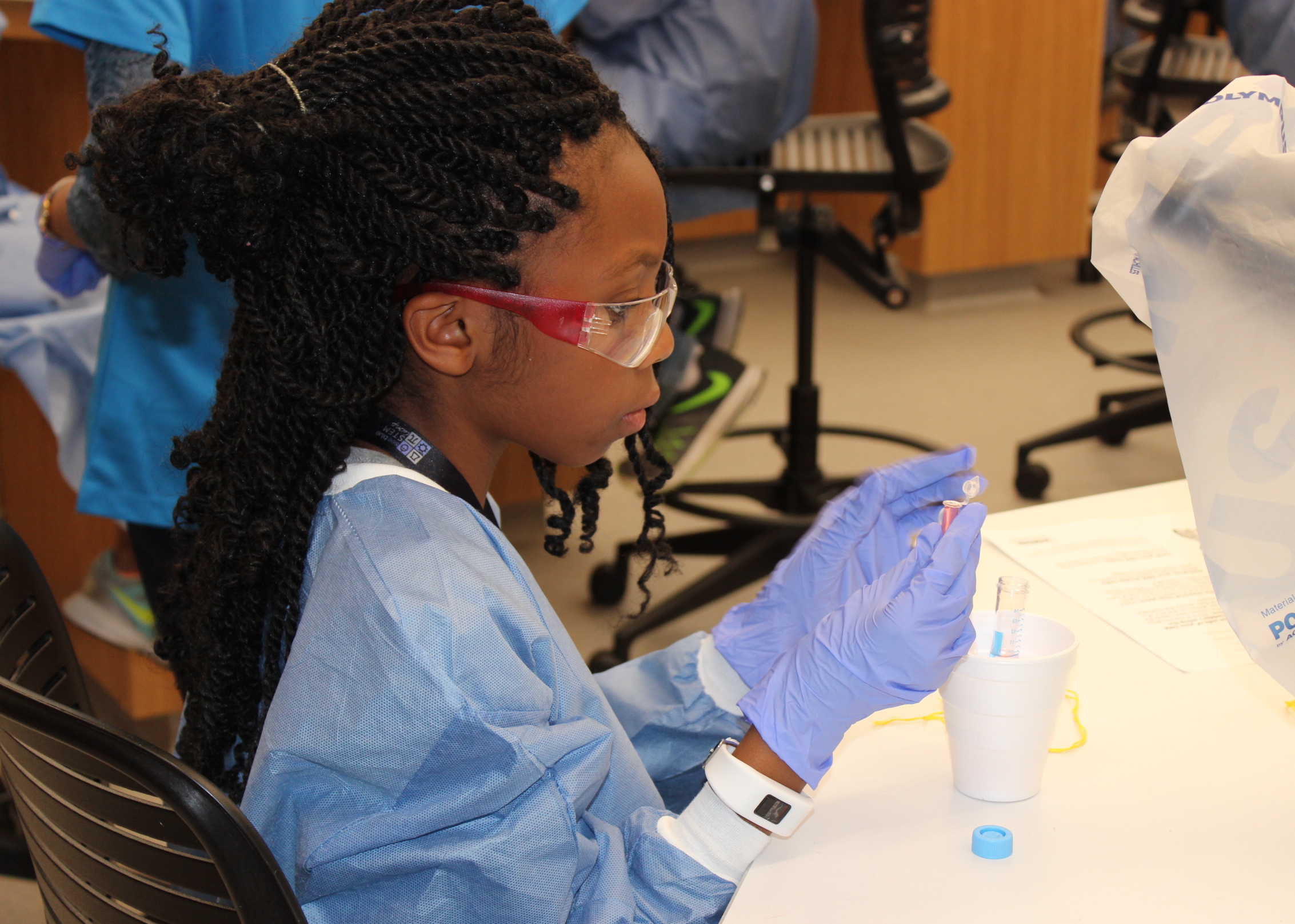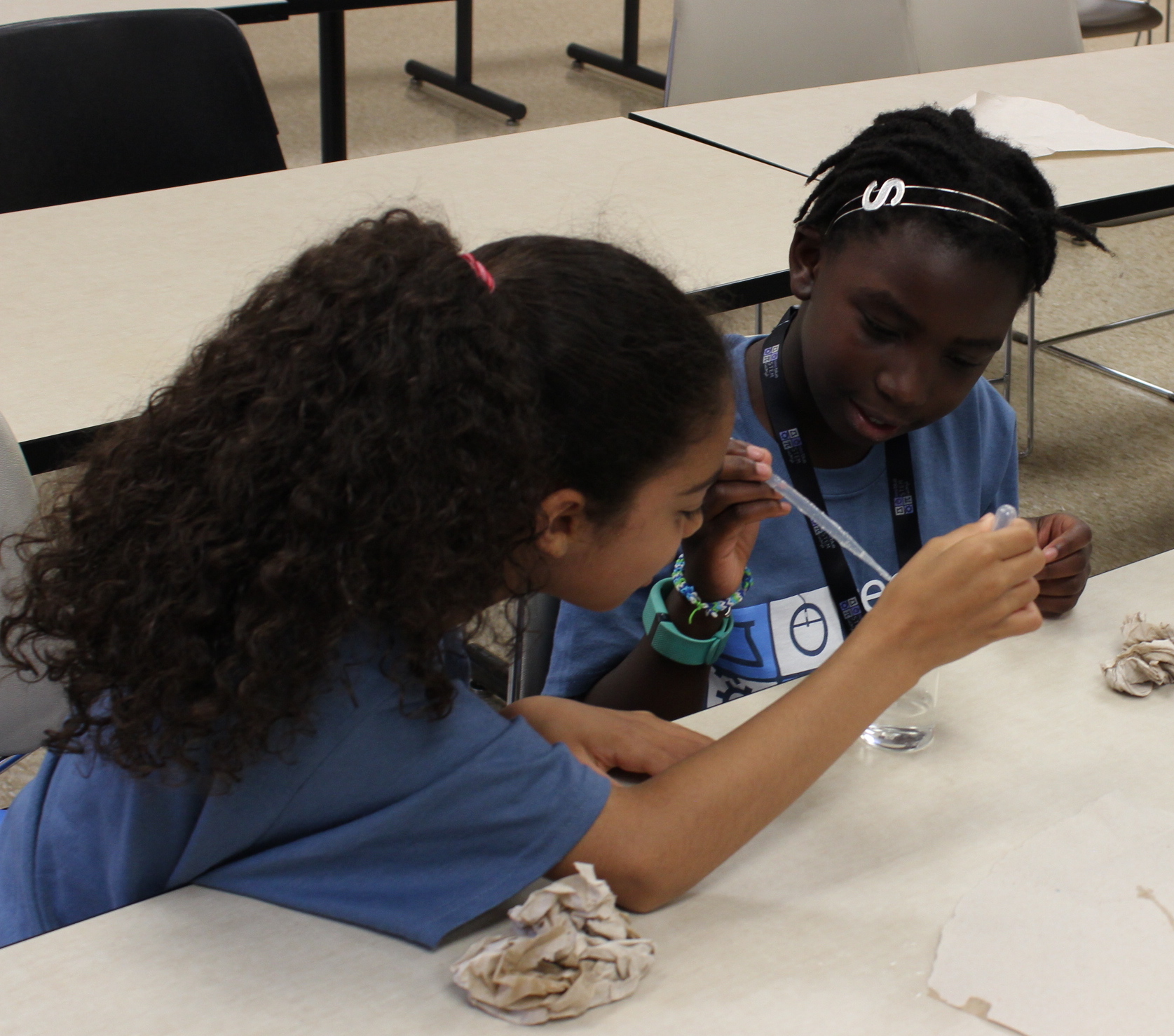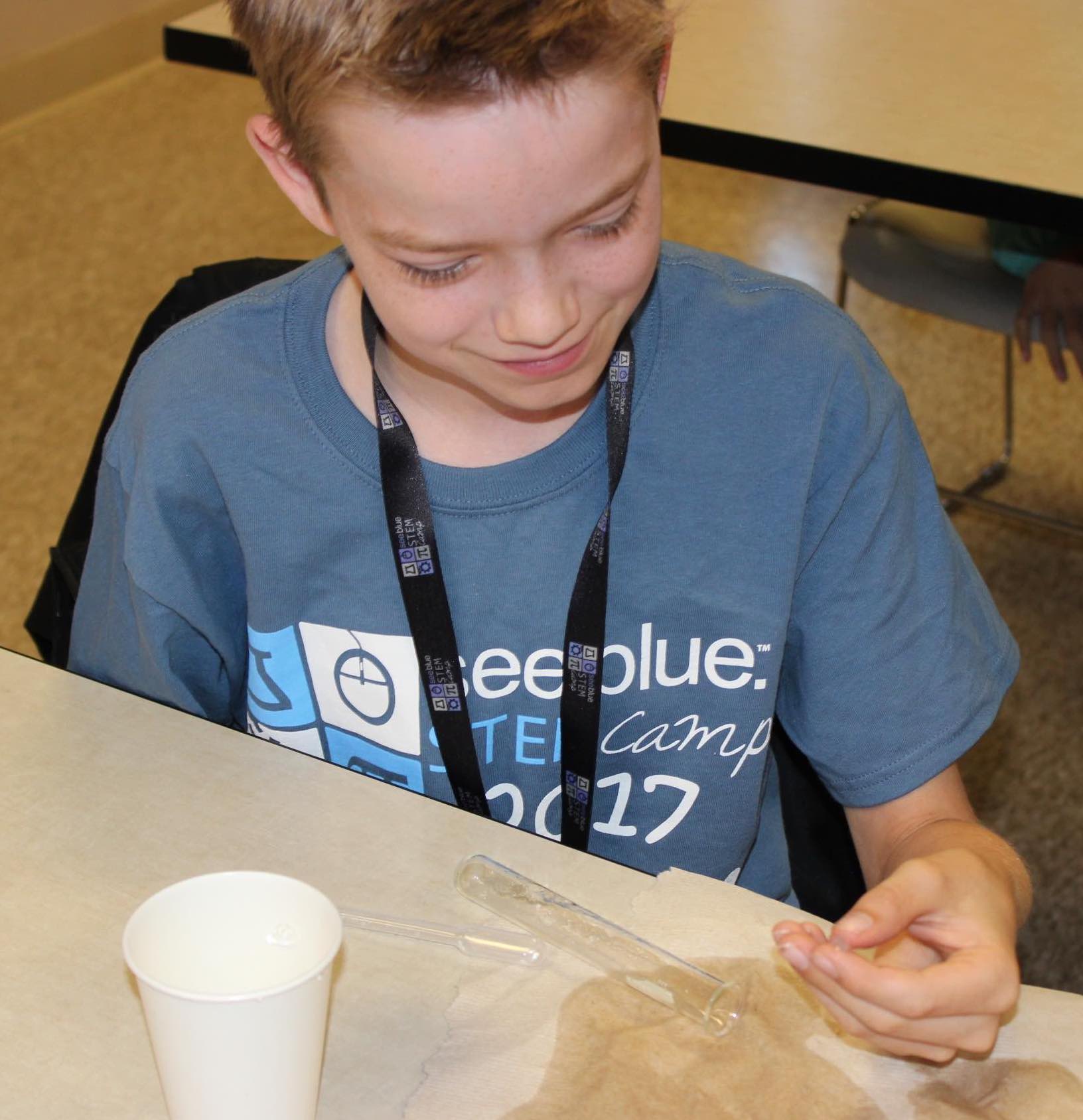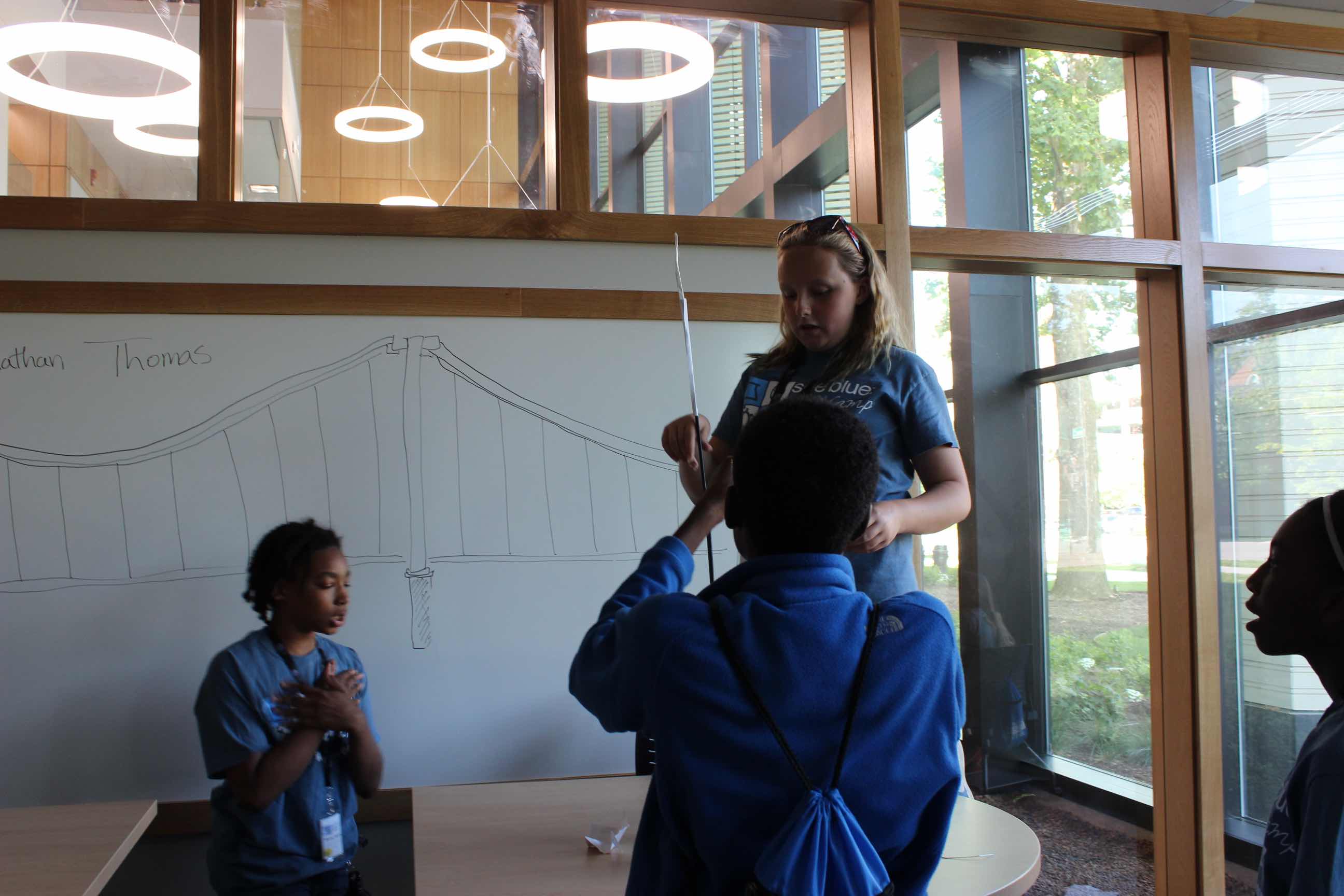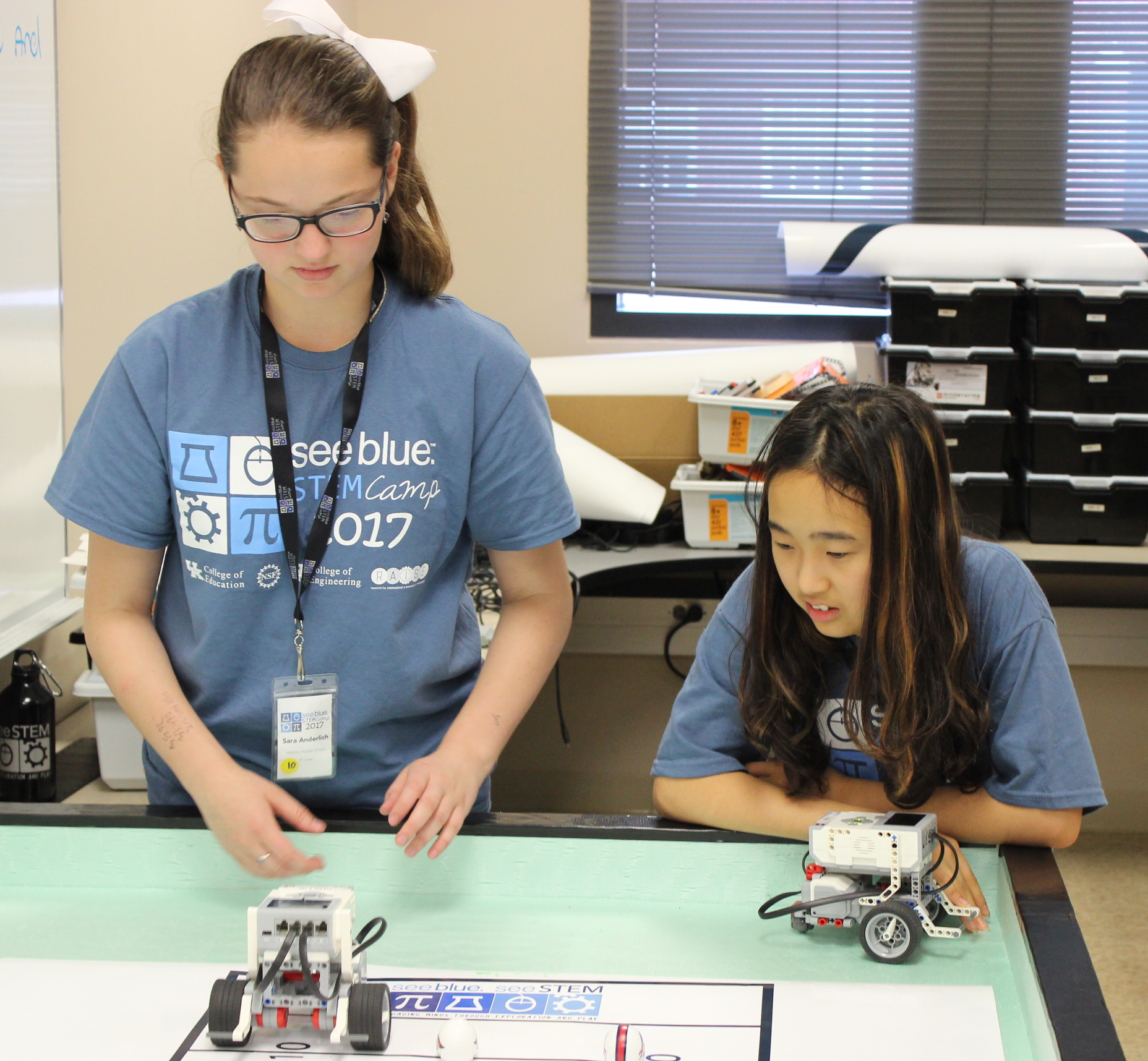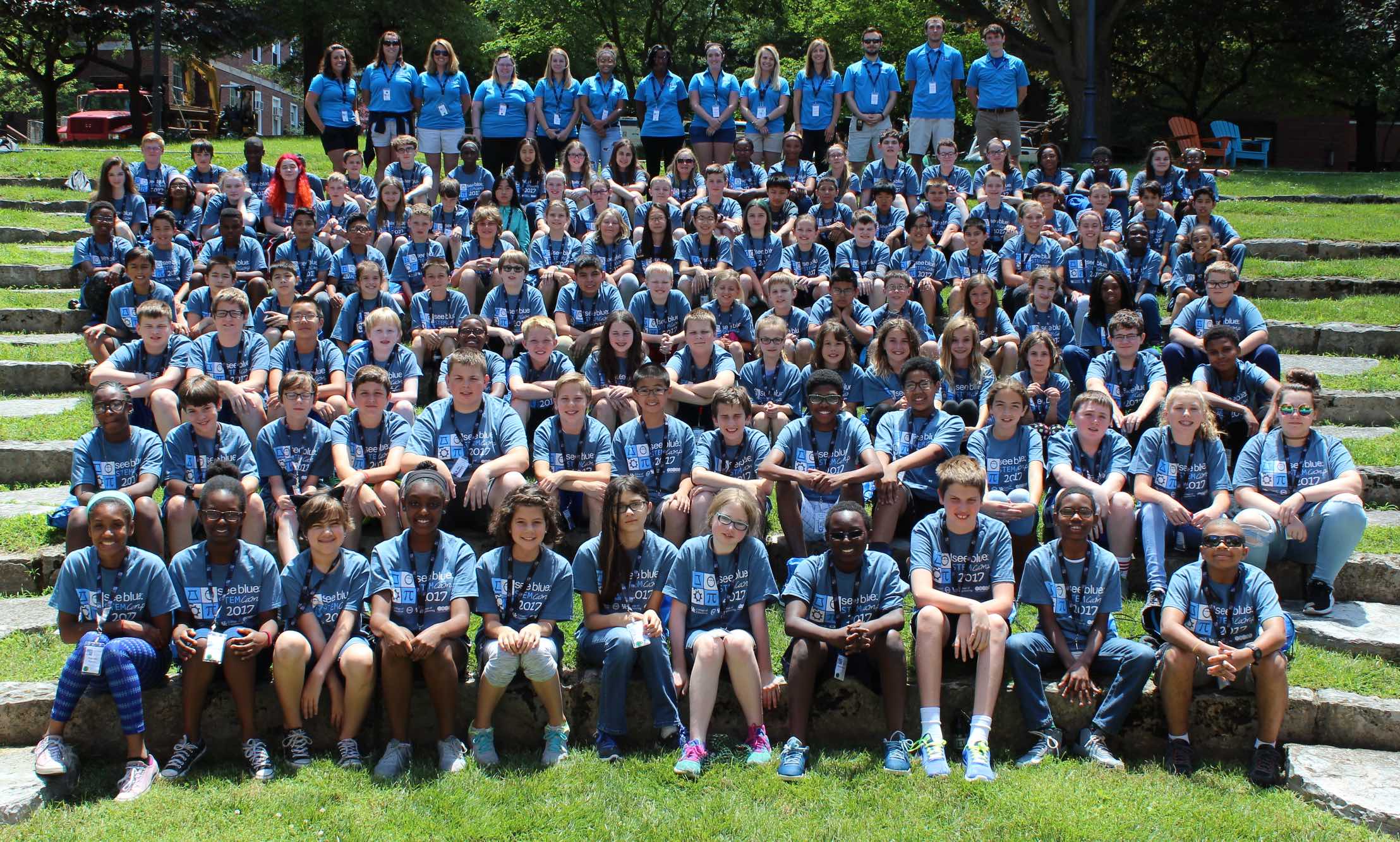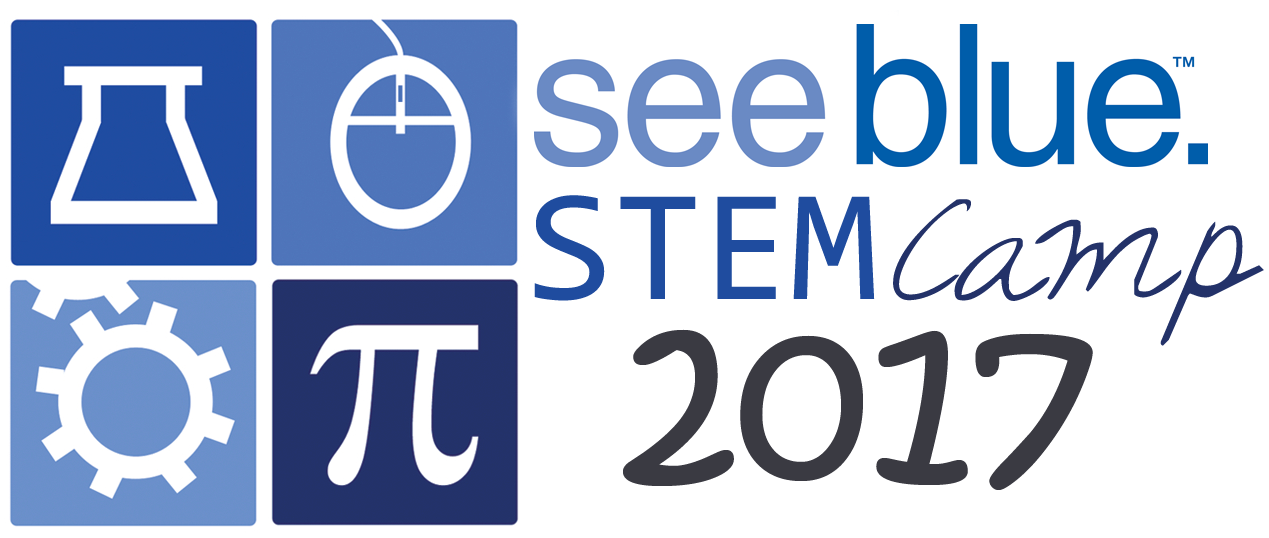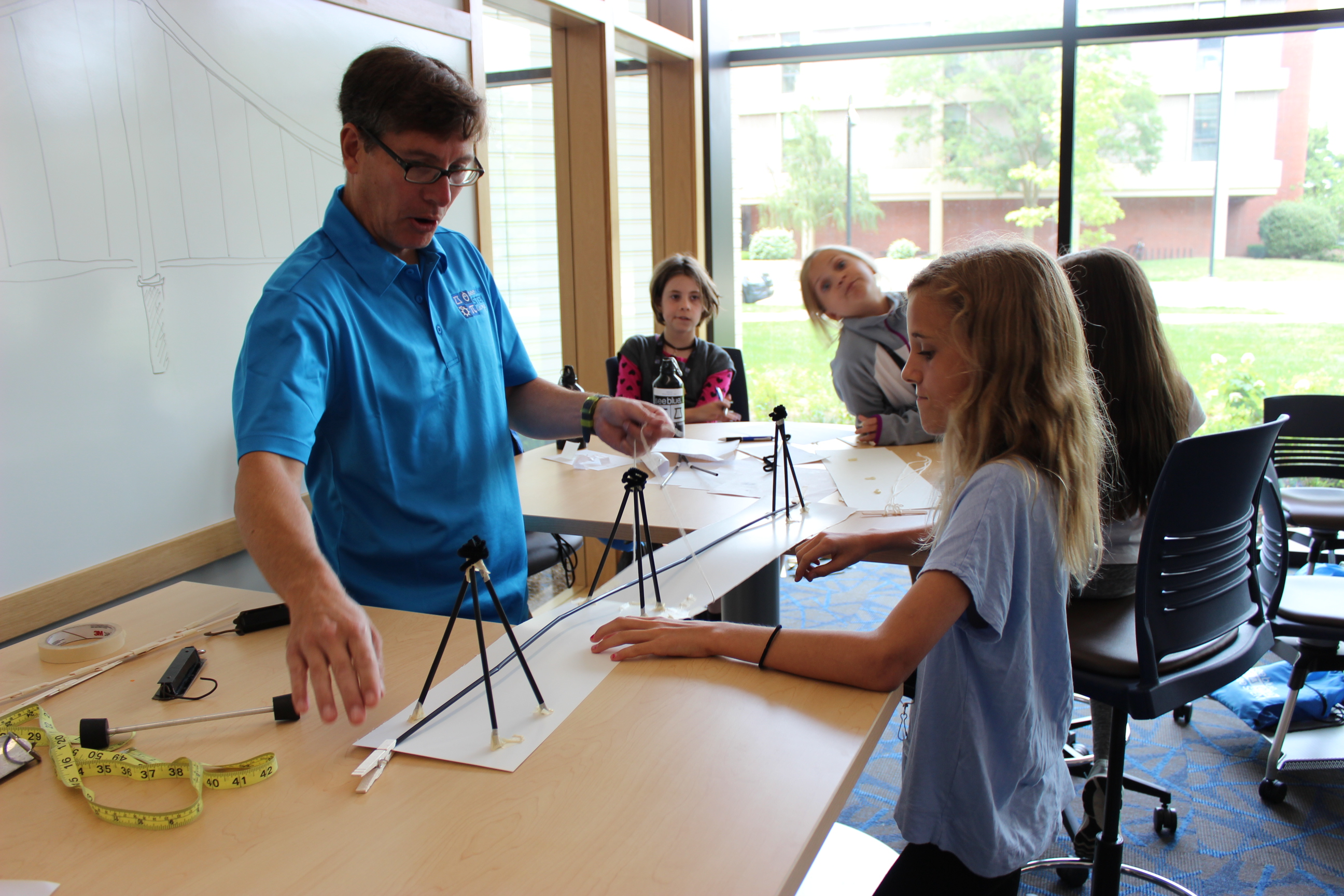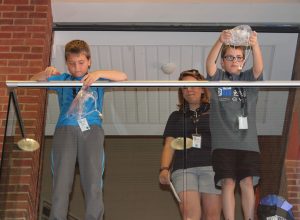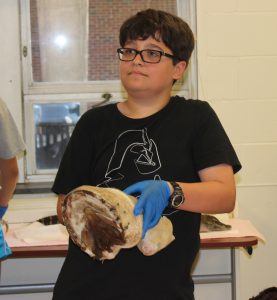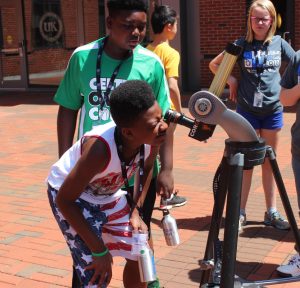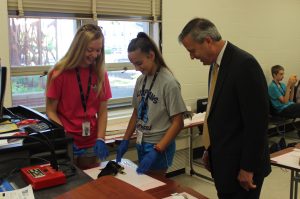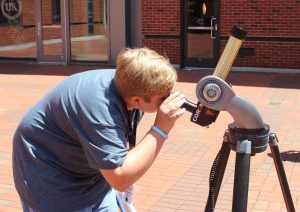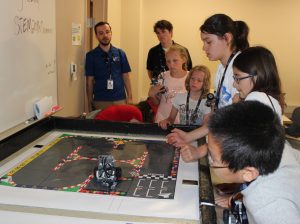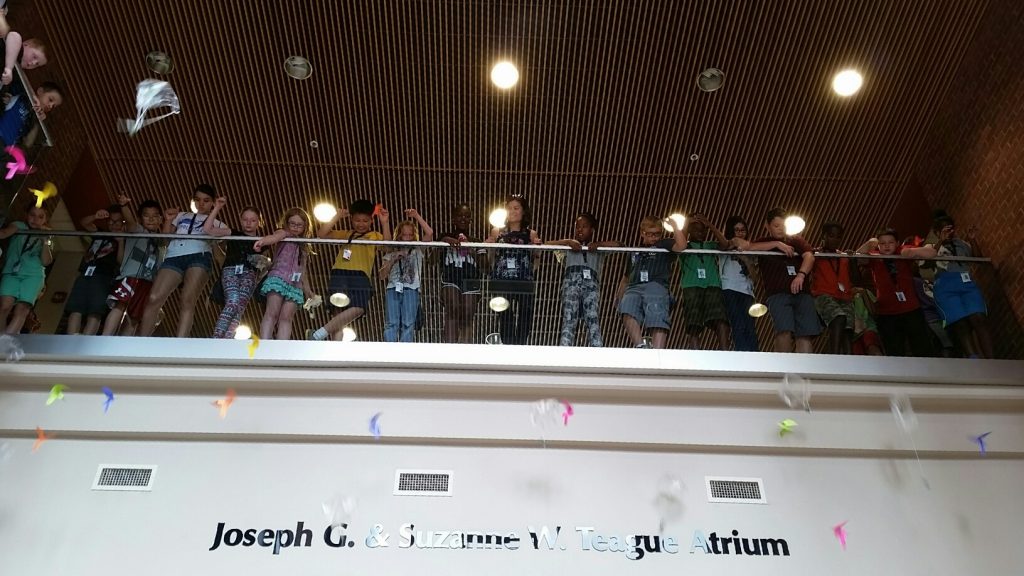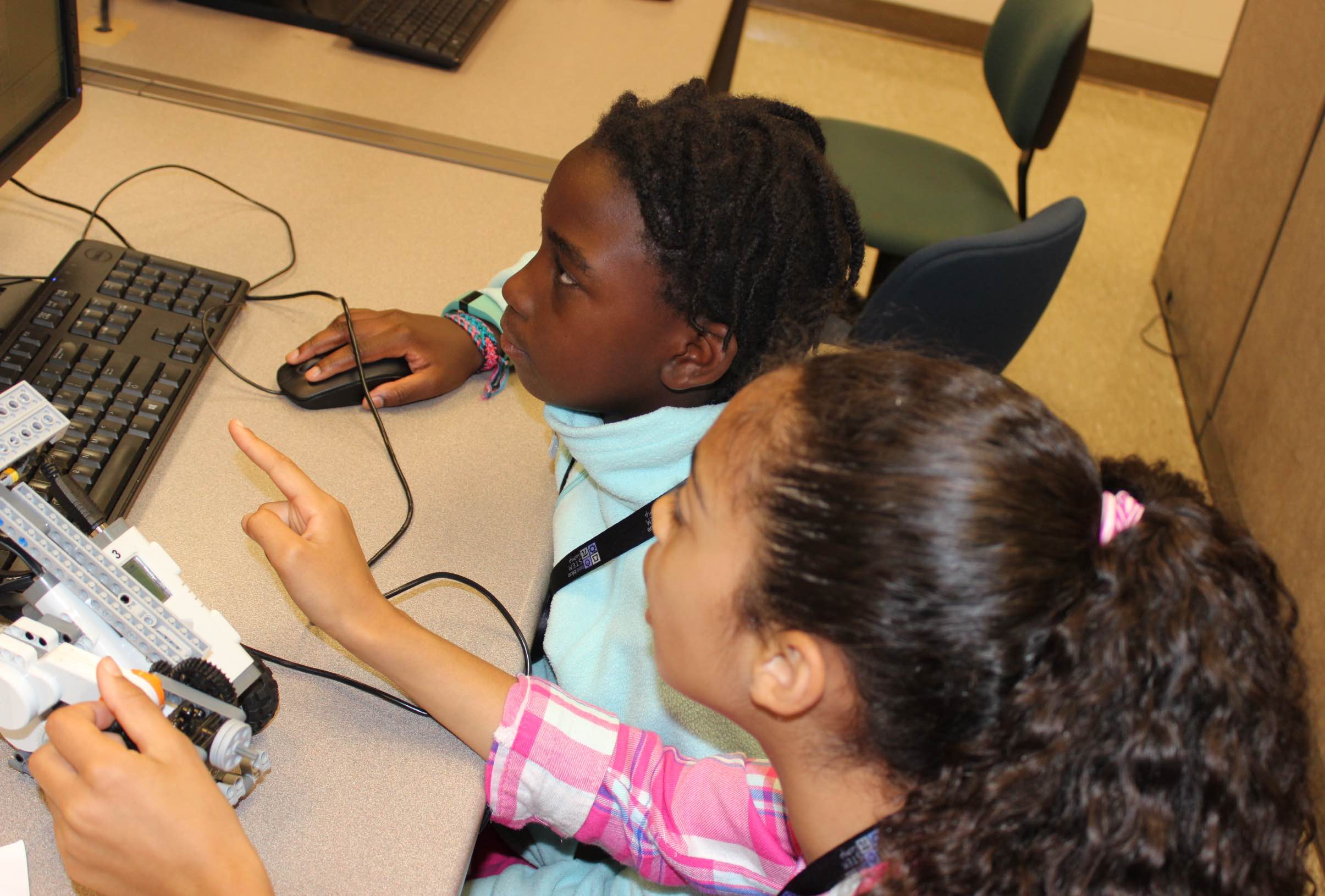 Thursday brought another hands-on exciting day at STEM Camp. This group of students is really something special…they are full of extra curiosity and questions. It has been awesome to witness this week!
Thursday brought another hands-on exciting day at STEM Camp. This group of students is really something special…they are full of extra curiosity and questions. It has been awesome to witness this week!
Blue/Red Groups
 They spent the day with Dr. Brett Criswell, one of our science (chemistry) educators here at UK. He focused on using different types of energy to power vehicles. The students got to make a car that was water powered and then got a chance to see the UK Solar Car and ask the students who created and race the car lots of questions. They loved making the small cars and then seeing a real solar car!
They spent the day with Dr. Brett Criswell, one of our science (chemistry) educators here at UK. He focused on using different types of energy to power vehicles. The students got to make a car that was water powered and then got a chance to see the UK Solar Car and ask the students who created and race the car lots of questions. They loved making the small cars and then seeing a real solar car!
In robotics, they continued with the Green City Challenge. Many of the groups made it pretty far today!
Yellow/Green Groups
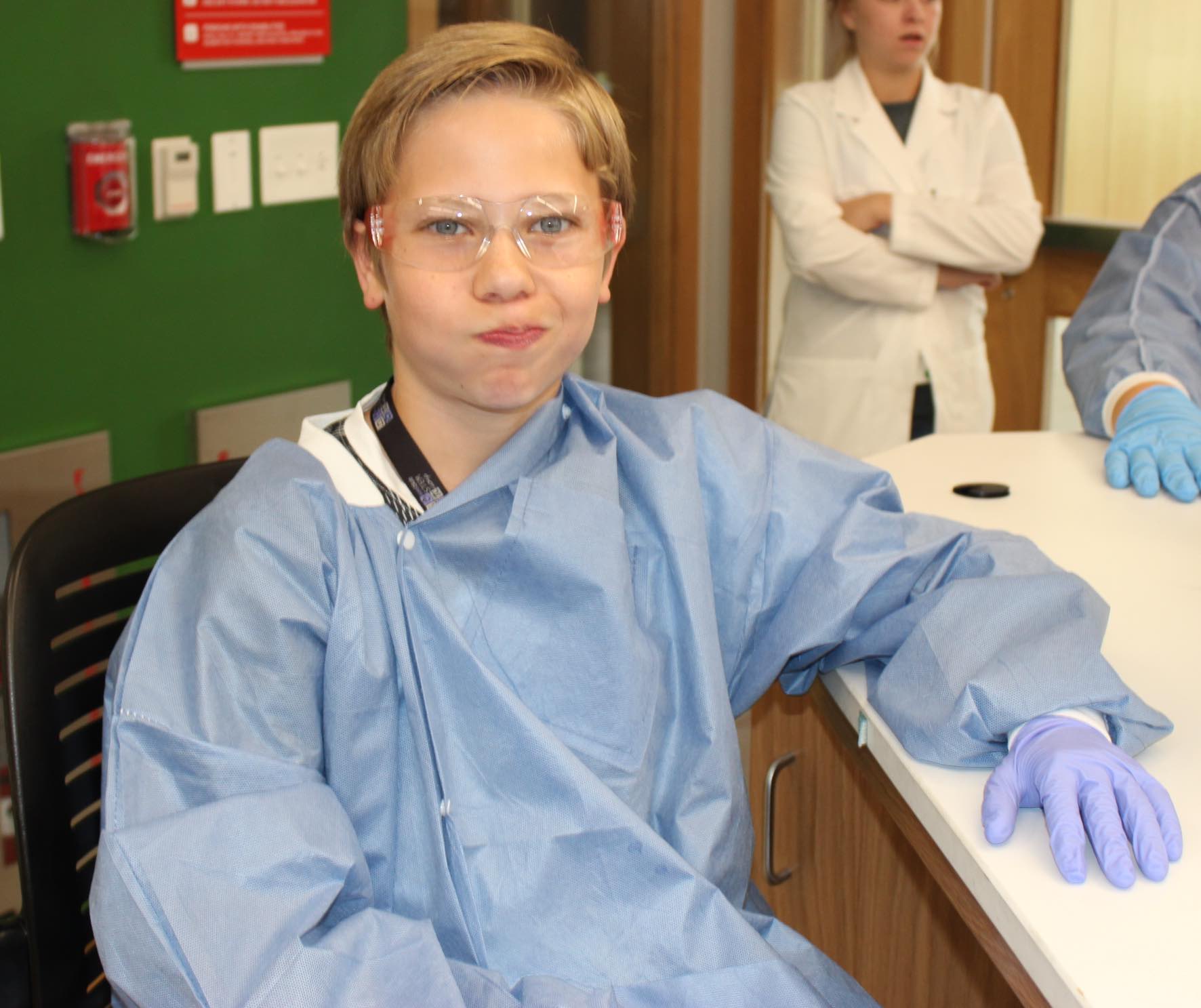 It was Yellow and Green groups’ turn to be in a biology lab in our beautiful new Don and Cathy Jacobs Science Building with Brittany Rice, a graduate student in the Biomedical Sciences doctorate program in the College of Medicine. They were able to use state of the art lab equipment, wear lab coats, goggles, gloves, etc. as a real laboratory scientist would (this included some lab safety lessons as well 🙂 ). They made models of
It was Yellow and Green groups’ turn to be in a biology lab in our beautiful new Don and Cathy Jacobs Science Building with Brittany Rice, a graduate student in the Biomedical Sciences doctorate program in the College of Medicine. They were able to use state of the art lab equipment, wear lab coats, goggles, gloves, etc. as a real laboratory scientist would (this included some lab safety lessons as well 🙂 ). They made models of 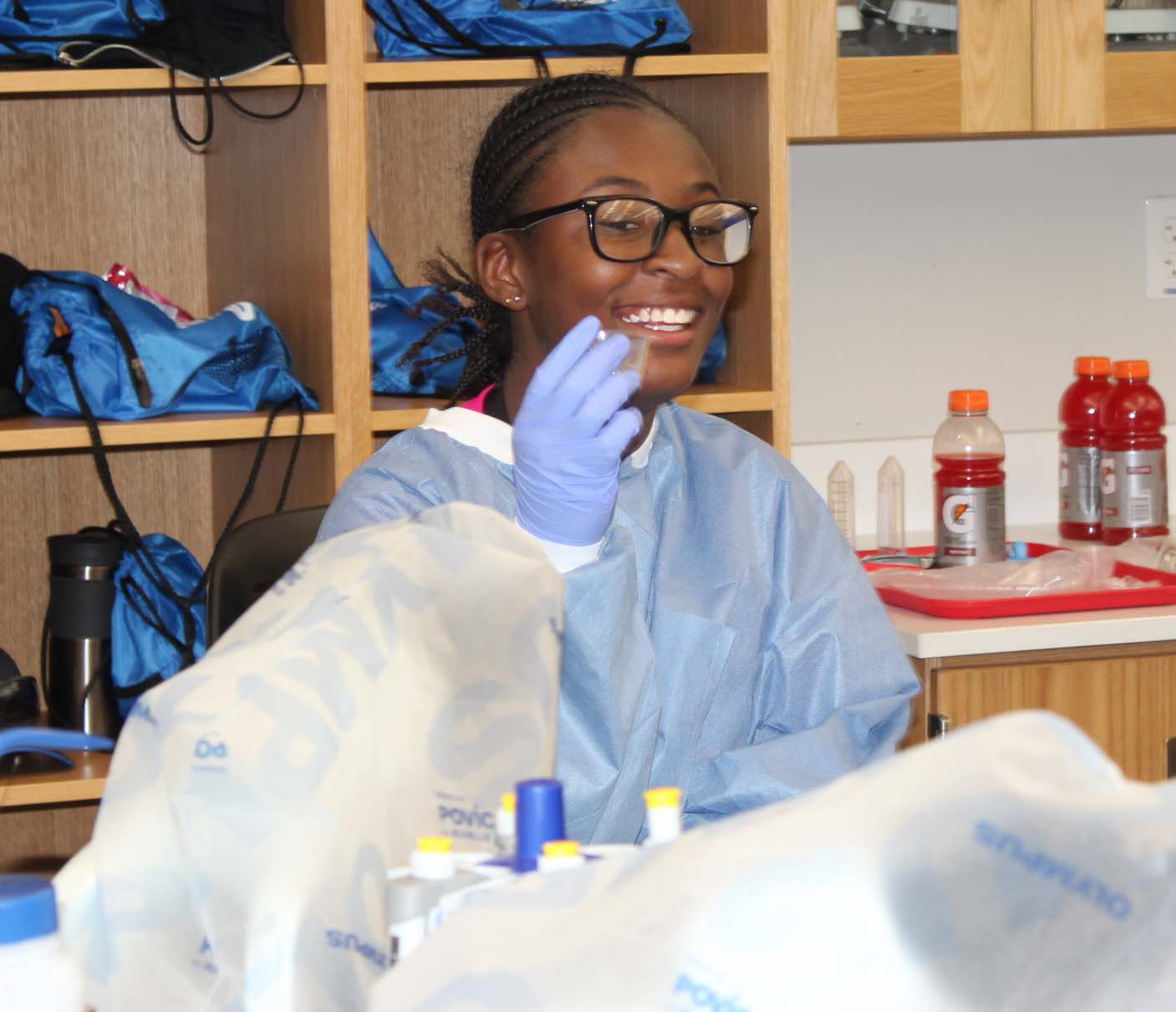 DNA and then did a simple DNA extraction themselves to look at their own DNA. They were very fascinated! Then they learned about bacteria and germs and how they grow and where they’re located. They did a bacteria activity with their hands…there was some extra handwashing that went on the rest of the day after they realized the germs on their hands 🙂
DNA and then did a simple DNA extraction themselves to look at their own DNA. They were very fascinated! Then they learned about bacteria and germs and how they grow and where they’re located. They did a bacteria activity with their hands…there was some extra handwashing that went on the rest of the day after they realized the germs on their hands 🙂
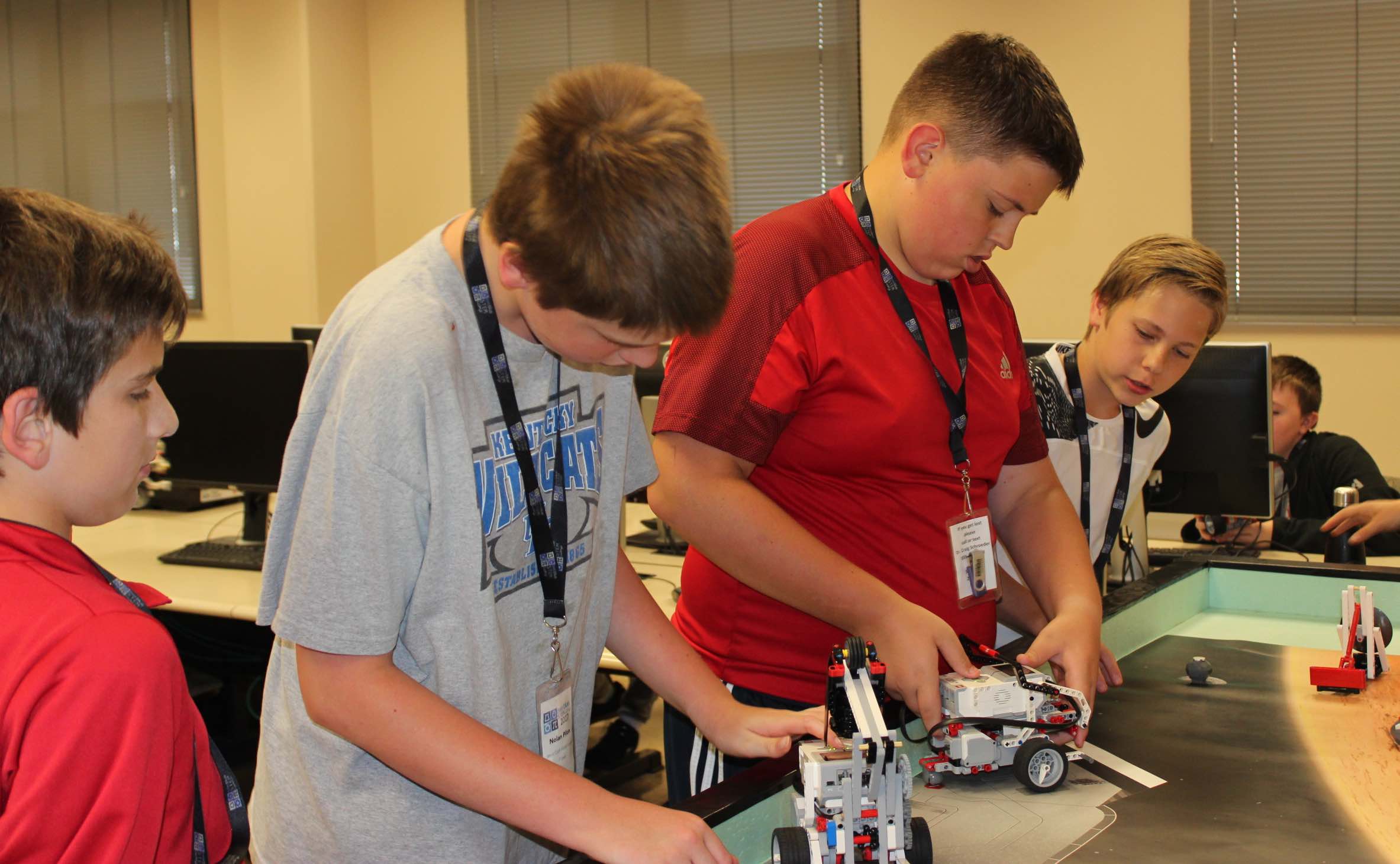 In robotics, they continued with the Space Challenge. Most groups have made it pretty far and some completed theirs today and so are working on mastering the challenges from earlier in the week. Lots of movement and exciting programs happening!
In robotics, they continued with the Space Challenge. Most groups have made it pretty far and some completed theirs today and so are working on mastering the challenges from earlier in the week. Lots of movement and exciting programs happening!
In their words…
- you can make dead muscle and heart tissue move with electricity
- I realy want to learn more about solar power and hydroelectric
- It’s fun to use comonly things to use it in a more complex way.
- we got see it right in front of our eyes, and it was real
- I got to make a water powered car.
Yellow/Green Groups
- Its called nucleic acid because DNA’s in the center of the nucleus.
- I liked the handson activities and being able to physically see my DNA
- it has so many uses in the future
- I thought it was really interesting learning about DNA, and how it bonds. We also got to extract some of our DNA.
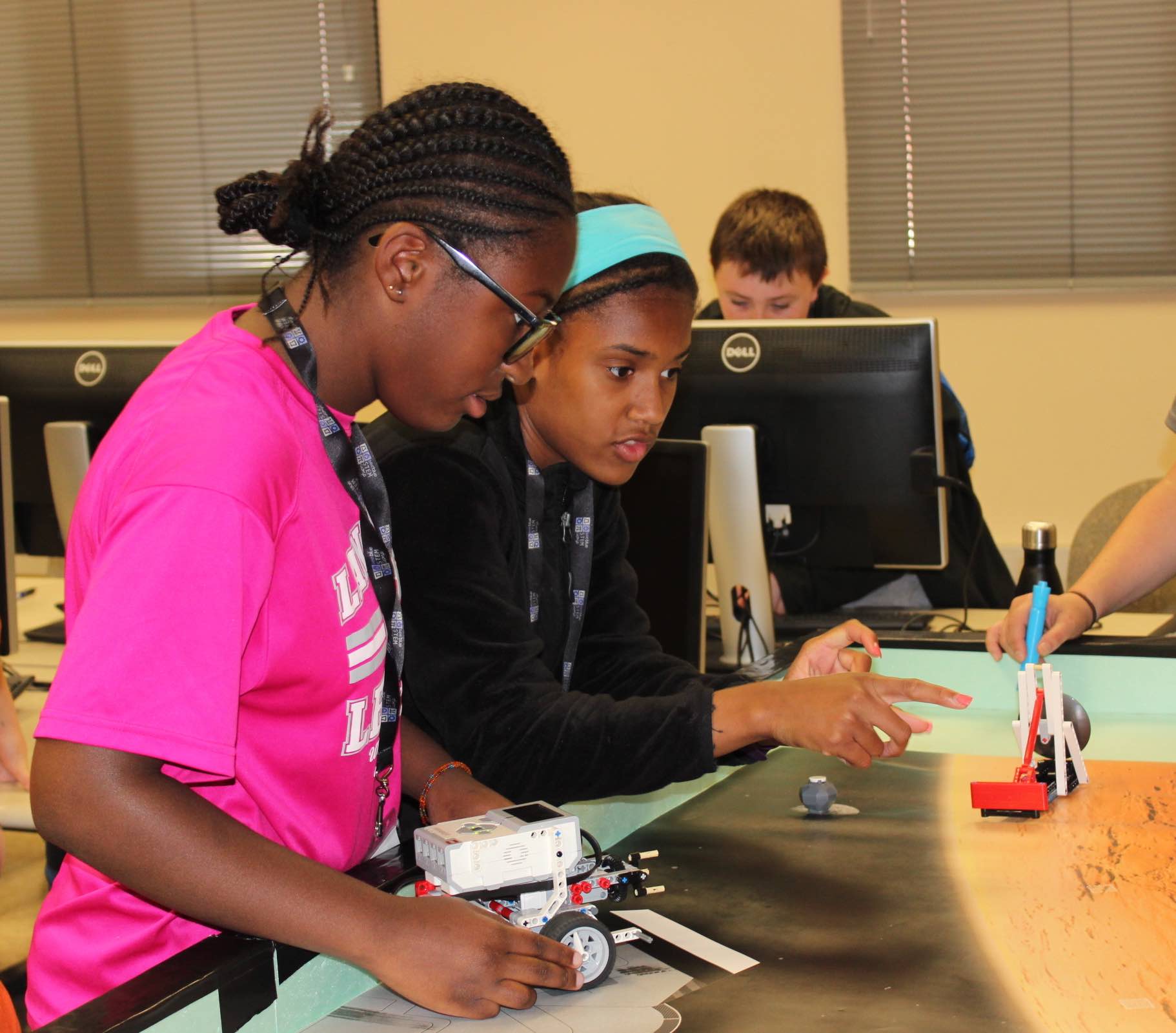
- I did not like swishing the gatorade in my mouth
- Adenine connects to Thymine & Cytosine connects to guanine
- it was very interesting, both doing it, and learning about DNA.
- I learned the shapes of DNA and what DNA creates mutations.
Conversation Starters…
- Why is it important to talk about different kinds of energy?
- What did you do to make your car move today? How did the water make your car move?
- What did you observe about the solar car?
- What challenges did you complete today in the Green City Challenge? What was your favorite part about programming today? What was the hardest part about programming today?
Yellow/Green Groups
- How did you extract your own DNA today? What did you observe about your DNA?
- What did you learn from the handwashing activity?
- What challenges did you complete today in the Space Challenge? What was your favorite part about programming today? What was the hardest part about programming today?
Picture of the Day… (click the picture to go to all the pictures from this week)


